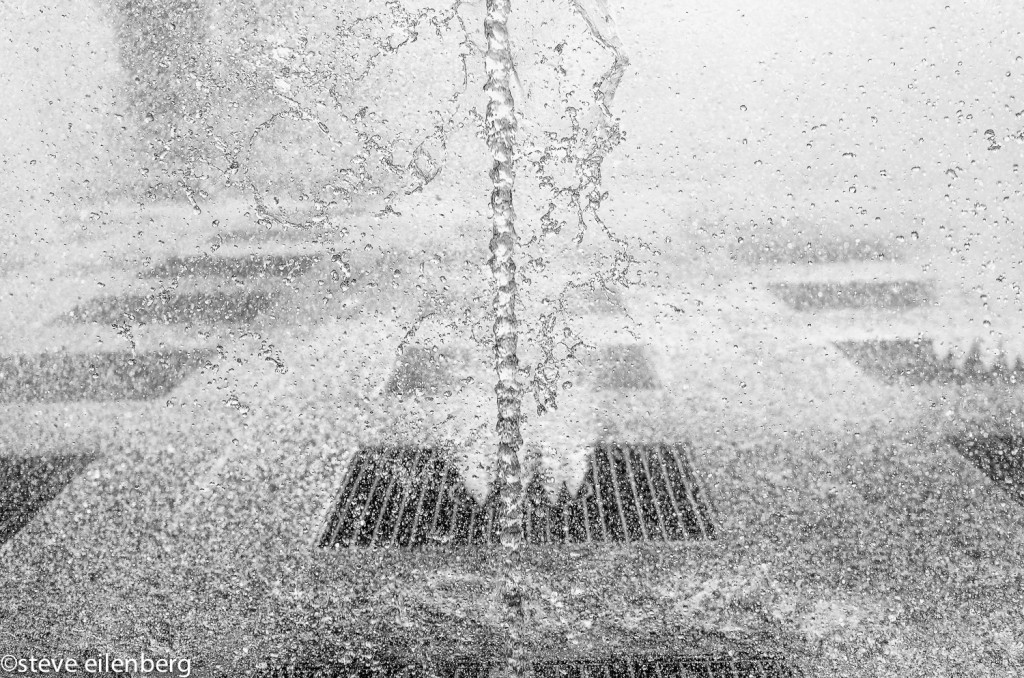
The South of France seems to summon the very essence of summer: blue skies, sidewalk seating at cafes, winding narrow back roads inviting exploration, the picture perfect merging of coast and sea. In the twentieth century, it became a refuge for artists fleeing wartime chaos, who found soft light and an alternative to the Paris artistic milieu. This legacy now offers much for the art loving traveler to seek out, with the entire Riviera dotted from one end to the other with artist decorated chapels and many museums which memorialize single artists and their circles.
I first heard about Matisse’s chapel, La Chapelle du Rosaire, as an art history undergraduate in the early 1980s, and had wanted to see it ever since.
Tales of artists settling up their bartabs in exchange for artwork at the famed inn, La Colombe d’Or, stirred my youthful imagination. Years ago, I bought a book in anticipation of eventually journeying to see these sights. It was published in 1998 by Barbara F. Freed and was titled Artists and Their Museums on the Riviera. Although it took a decade or so to start making use of it, we eventually made a series of trips, gradually working our way through many of the listings in this guide and making some discoveries of our own. In recent years, we’ve spent 5 weeks spread over 3 trips in the region, finding a lot to love.
Surprisingly, the Riviera hasn’t always been a summertime destination. Nice was a longtime popular winter get-away for Brits fleeing the cold in the 1800s, as the name of its seaside Promenade des Anglais attests. In the 1920s, an American couple, Gerald and Sara Murphy, were among the first expats to start living year round in the Cote d’Azure. F. Scott Fitzgerald and Ernest Hemingway were among the writers who were friends of the Murphys, renting nearby villas and spending extended writing sojourns in the area. Fitzgerald used the Murphys as models for the glamorous couple at the heart of his last full novel, Tender is the Night.
For our first stay, we based ourselves in Nice, centrally located and well connected by bus and train.
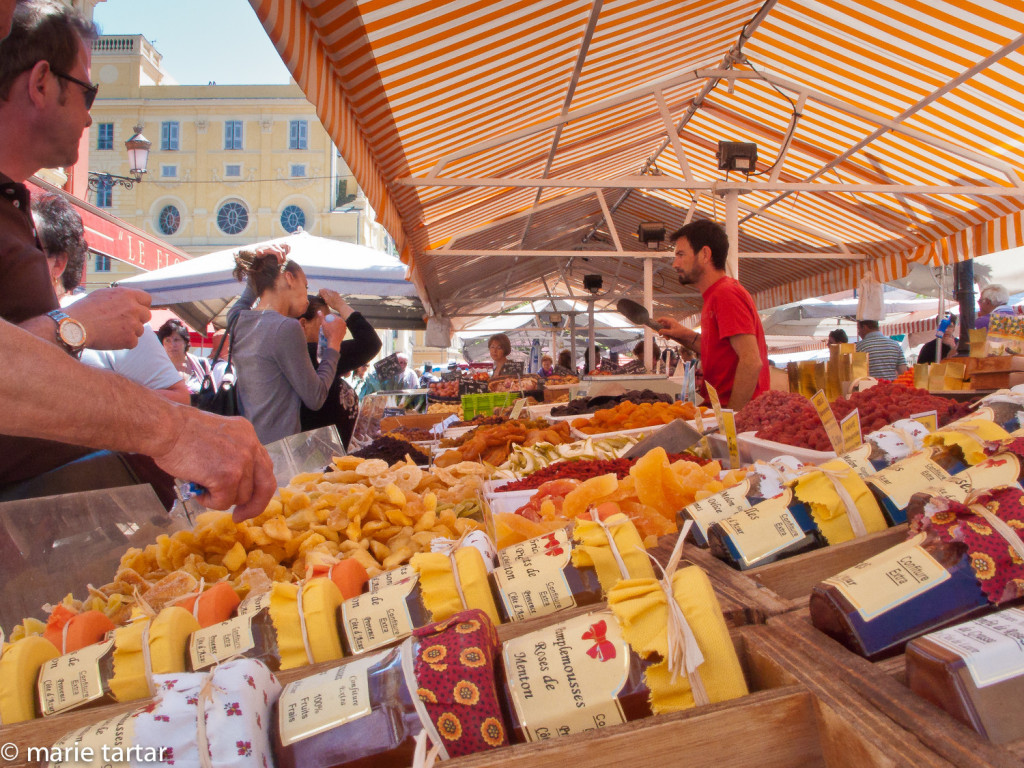
Cours Saleya in Nice is bustling most mornings, either as a farmer’s market or for flowers and antiquities. Matisse lived for years at the foot of this plaza
At the time (May 2010), I was a year-plus into studying French and determined to practice at every opportunity, we decided to forego renting a car. My thinking was rather than isolate ourselves with a map in our own car, I’d be forced to speak more in negotiating the public transit system, buying tickets and verifying we were on the right bus or train. Of course, this led to some adventures.
One bright and early morning, I presented myself to the front desk of our small hotel, the Hotel Windsor. Well located a block off the Promenade des Anglais, with individually artist decorated rooms, it has a pleasant verdant courtyard, perfect for morning coffee and breakfast and organizing the day. On learning our intention to head that day by bus to St-Paul de Vence, we were told: “Not today, you can’t! Not by bus! There is a strike!”
“But you CAN go tomorrow.”
(Blank stare on my part): “How do you know the strike will be over tomorrow?”
“It’s just for one day.”
Thus were we introduced to “la grève”, the scheduled strike, a frequent occurence in French life.
The next day, we successfully negotiated our way to the bus station and were quickly whisked west and up the hill the 20 miles or so to St. Paul-de-Vence for an astonishingly cheap 1 Euro. We were to quickly undo this economy by enjoying ourselves so much that we overstayed on a shopping spree, buying hemp clothes for Steve, jumping on what we thought was the correct bus back. However, it headed higher up the hill to Vence. I wasn’t concerned at first, sure this was a circular route and that the bus would surely turn around in Vence and head right back down the hill to Nice. But no, the bus driver parked the bus in a definitive manner, to our astonishment, and it became clear that the bus would not be budging any time soon. In fact, we had missed the last bus back to Nice, so we were on our own. No problem, it was only 20 miles away, how expensive could that be?
“70 Euros, at least.”
“What?!”
At least it was a luxuriously appointed Mercedes taxi which sped us back down the hill!
We had a similar transportation misadventure on an earlier trip (2007) to France, when we did back-to-back Backroads bicycle trips to the Loire Valley and Bordeaux. There was a couple day gap between the trips, and Backroads had suggested a sojourn at a Relais & Chateau on the outskirts of Pauillac, Château Cordeillan-Bages. I was sufficiently preoccupied with other details of this trip that it never occurred to me to inquire how far it was from Bordeaux. Alighting at the train station, we jumped into a cab, assuming it was just a few minutes away. The driver spoke a little English and at that point, we effectively spoke next to no French. He did manage to communicate that it would be at least an hour’s ride, to my great surprise. During our idyllic stay, including an incredible meal so filling we reluctantly waved AWAY the chocolate cart, we noticed the bus stop was virtually at the gate of the vignoble property. We probably are the only people in the world who after staying at a Chateau & Relais, depart on a bus after arriving in style after an hour’s cab ride, but it was clean, going directly where we were going, unbelievably cheap and to my thinking, averaged out our transportation costs. Of course, being Southern Californians and thus tied to car transportation, we think alternative modes of transport are part of the appeal of travel to other regions.
But I digress. Back to the artistic lure and legacy of the Riviera. Our first stay on the Cote d’Azure in 2010 was a week in Nice, preceeding a visit in Florence with San Diego friends, Monica and Charley, on their yearly 3 month sojourn. Our very first excursion, Musée Chagall, up the hill on bus #22, was wonderful, incorporating into the modernist building a cross section of his work, including monumental paintings of biblical scenes, and stained glass and mosaic.
Another afternoon was devoted to MAMAC-Musee de l’arte moderne et l’arte contemporaire, in a bold contemporary structure, with nice views of Nice and a rooftop jardin. Niki de Saint Phalle and Yves Klein are well represented in the collection, each with a large room devoted to their work.
Bus #400 goes to St. Paul de Vence by way of many stops en route, but after an hour plus, one arrives at the outskirts of the walled enclave of picturesque cafes and boutiques, ensconced in a rocky fortress. At the far end of the town, there is a viewpoint, overlooking the cimetière in which Marc Chagall, a longtime resident, is buried. The storied La Colombe d’Or is right at the entrance to the old town, and we had a nice shaded seat on the terrace adjacent to a commissioned ceramic Leger wall piece for our lunch of salade verte and chicken and morel mushroom fricassee for me and mini-rack of lamb for Steve, sharing buttery haricots verts.
Another favorite, the Foundation Maeght, is a 15 minute walk through tall trees, and is a beautiful, art and tree filled oasis, set off by a dramatic contemporary structure by Spanish architect Josep Lluís Sert. We so enjoyed this first visit that each subsequent one has included a return, one year with my sister Clarissa and her husband Jason, followed the next year by a return with Steve’s sister Sarah and her husband Aaron.
The museum was established by Cannes art dealers, Aimé and Marguerite Maeght, who were friends with many artists and whose personal collection formed the nucleus of the collection. The grounds are really magical in the soft golden late afternoon light, and are dotted with sculptures and fountains.
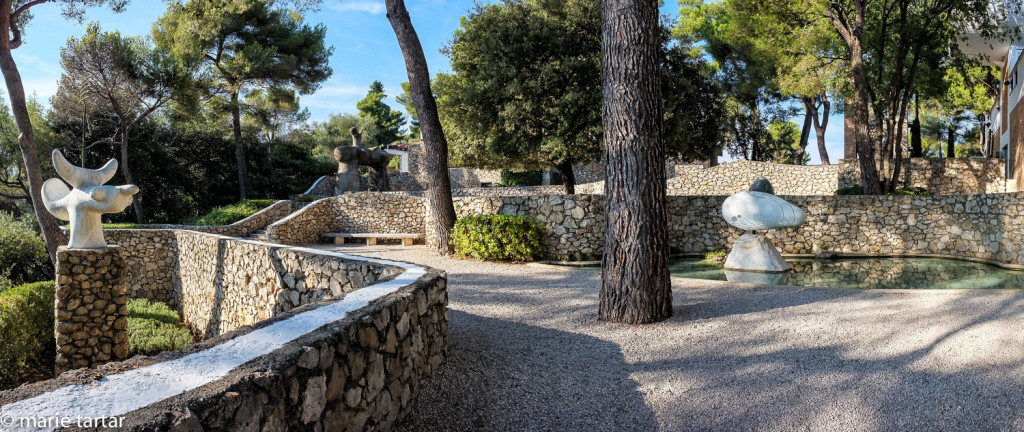 J’adore the Labyrinthe de Miró.
J’adore the Labyrinthe de Miró.
I had been quite disappointed with the Fondación Miró in Barcelona, finding this enchanting setting a much more pleasurable way to enjoy Miró’s playful sensibility. He was quite involved with the planning for the museum, as were other artists.
Matisse considered his Chapelle du Rosaire in Vence the culmination of his life’s work as an artist, and devoted 4 of his final years to the project, down to the design of the altar and vestments for the priests.
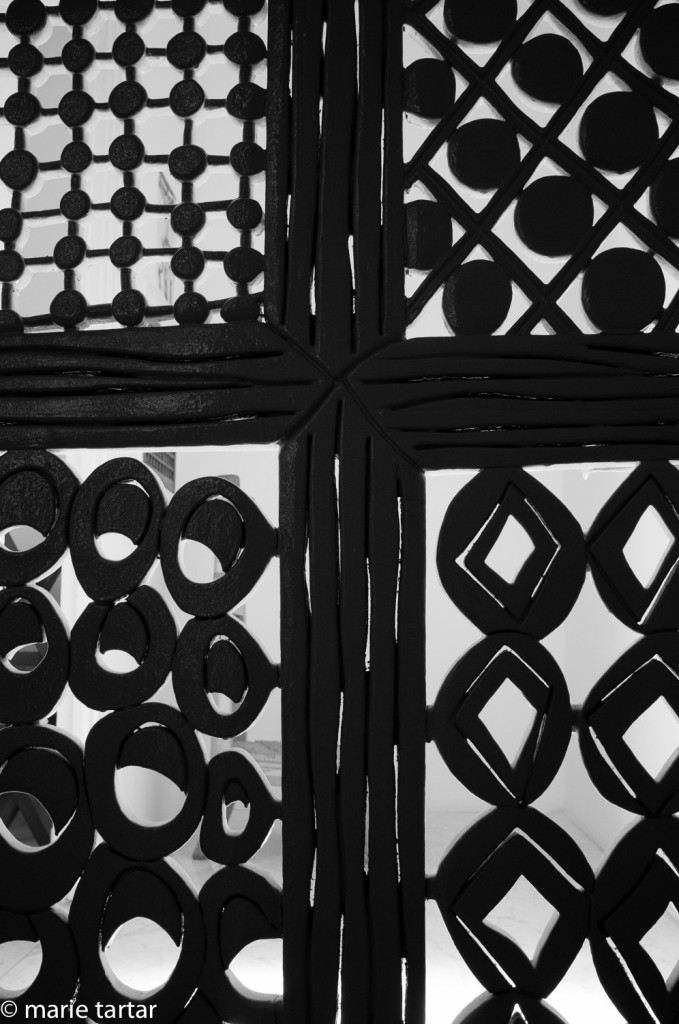
Detail of confessional door, Chapelle du Rosaire de Matisse (I confess: photography isn’t permitted inside the chapel!)
I recently watched a wonderful documentary, Un Modèle pour Matisse, on the long friendship between Matisse and Sister Jacques-Marie (née Monique Bourgeois), which led to the realization of the chapel, completed in 1951. It was written and directed by Barbara F. Freed, the same Carnegie Mellon professor who wrote Artists and their Museums on the Riviera. Matisse and Sister Jacques-Marie initially met in Nice when the 21 year old nursing student responded to an ad placed by Matisse for a night nurse. He was recovering from colon cancer surgery. After his convalescence, she posed for him. Tuberculosis and World War II intervened and led to Monique being cared for in a convent in Vence, across the street from where Matisse relocated during the war. Their friendship continued even after she decided to become a nun. For Matisse, an atheist (although born a Catholic), the chapel was an artistic challenge to be resolved.
Artist decorated chapels are one of the trails we followed eagerly on our journeys through the region. Some of my favorites are by Jean Cocteau. Prior to traveling through the Riviera and becoming acquainted with his built works, we only knew this towering figure of 20th century French artistic life through his films, notably Beauty and the Beast (1946) and Orpheus (1949). He was a multi-media artist, well known in France for his plays, novels, artwork, poetry and life. Our first brush with his presence on the Cote d’Azur was visiting his most famous chapel, Chapelle Saint-Pierre de Pecheurs in Villefranche-sur-Mer, just a 5 minute train ride from Nice. The Romanesque structure dates from the 14th century and was used by the local fisherman to store nets and equipment. It is dedicated to St. Peter, patron saint of fishermen. Beginning in 1924, Cocteau spent time over the years in Villefranche-sur-Mer and became friendly with the fishermen. In 1957, he proposed decorating and restoring the chapel, a project that he had considered for 10 years.
It is festooned with swirling motifs covering the walls, incorporating the local fisherman, gypsies, surrealist symbols (including many eyes) and was adorable.
On our next trip to this area, we did a 2 week home exchange, and stayed in a typical Provençal style home with a pool and a nice view with my sister Clarissa and her husband Jason in the tiny town of Montauroux, north of Fréjus and Saint-Raphaël .
After picking them up in Nice, our first excursion was to Menton, close to the Italian border. A translation of my notes in French from that trip reads: We decided to go to Menton. The prior trip, we had visited the Jean Cocteau decorated chapel in Villefranche-sur-Mer, and we wanted to see more of his work. Menton is an attractive coastal town. There are effectively two Cocteau Museums. One is new, very contemporary, just finished in 2011 and the other, the Bastion Museum, is in the Menton harbor wall, a site Cocteau chose during his lifetime.
(Nous avons decedé d’aller à Menton. La visite dernière, nous avons visité la chapelle de Jean Cocteau à Villefranche-sur-Mer, et nous voulions voir plus de ses oeuvres. Menton est un ville très attractif, au bord de la mer, et il y a deux parties du musée Cocteau. Une partie est très nouvelle, une construction contemporaire qui était fini l’année précédent. L’autre est dans un petit fort, un endroit au bord de la mer que Cocteau a choisi pendant sa vie.)
The contemporary Cocteau museum is the design of French architect Rudy Ricciotti, the winner of an international competition for the commission.
He is also known for designing the new Islamic wing of the Louvre (in collaboration with architect Mario Bellini). We found ourselves following his trail the following year, visiting MuCEM (Musée des Civilisations de l’Europe et de la Méditerranée) in Marseille. For the Cocteau Museum, the architect drew influence from Cocteau’s life, citing “his zones of light and darkness, his enigmatic self-mythology fueled by contrasts.”
The contemporary museum is large, and houses video displays of Cocteau’s movies and artworks, while the 17th century bastion down the street has niches filled with his ceramics, work he did late in his life. The core of the Cocteau museum’s extensive collection of Cocteau’s graphic work derives from the collection of the late California businessman and Holocaust survivor, Séverin Wunderman.
A few blocks away, in the Hotel de Ville, is a marriage hall decorated by Cocteau in 1957, reportedly still a popular venue for marriages. Clarissa, Jason and I made not one, not two, but three trips over during the afternoon, determined to succeed in seeing it and eventually triumphing. (I think our first arrival was during lunch, the second during a guided tour, and we finally got in the third time for our guided tour.)
(Clarissa, Jason et moi avons visité aussi la salle de marriage dans l’Hotel de Ville, decorée par Jean Cocteau-c’était necessaire d’être très persistent pour réussir en visitant cette salle. Nous avons essayé trios fois avant de triompher.)
Cocteau’s involvement with Menton began when he attended a chamber music festival in August 1955, where he met the mayor. A month later, he noted in his journal that the mayor had asked him to decorate the Salle de Mariage. His first sketches date from 1956, and the Salle was inaugurated in 1958. While still working on the Salle de Mariage in 1957, the mayor proposed to Cocteau creation of a museum of his works in the Bastion.
These two museums are as different as can be, two sides of a coin, the bastion rustic and traditional , the museum sleek and contemporary with an organic quality to the limb-like sheathing. I was reminded of those signature sconces from “Beauty and the Beast,” the arms protruding from the wall, holding torches. I loved them both, and completely see the enduring appeal of the Salle de Mariage to hopeful nuptials. All of Cocteau’s work has fantasy elements, as well as references to Greek mythology, mysticism (although he completely rejected attempts to classify his work as surrealist), with an emphasis on purity of line.
(Pour complementer notre visite à Menton, nous avons visité une autre chapelle de Jean Cocteau, Le Notre Dame de Jerusalum.)
Much less well known than his chapel in Villefranche-sur-Mer is Cocteau’s chapel Notre Dame de Jerusalum, on the outskirts of Fréjus, in a pine forest.
Work was begun on the chapel, commissioned by a banker from Nice, in 1963, but Cocteau’s death later that year interrupted its progress. His adoptive son, Edouard Dérmit, saw the project through to completion. This octogonal chapel is decorated with frescoes depicting the passion and resurrection of Christ on the interior and with mosaics on the exterior. The figures of Jean Cocteau and his long-time lover, actor Jean Marais, can be recognized among the apostles. 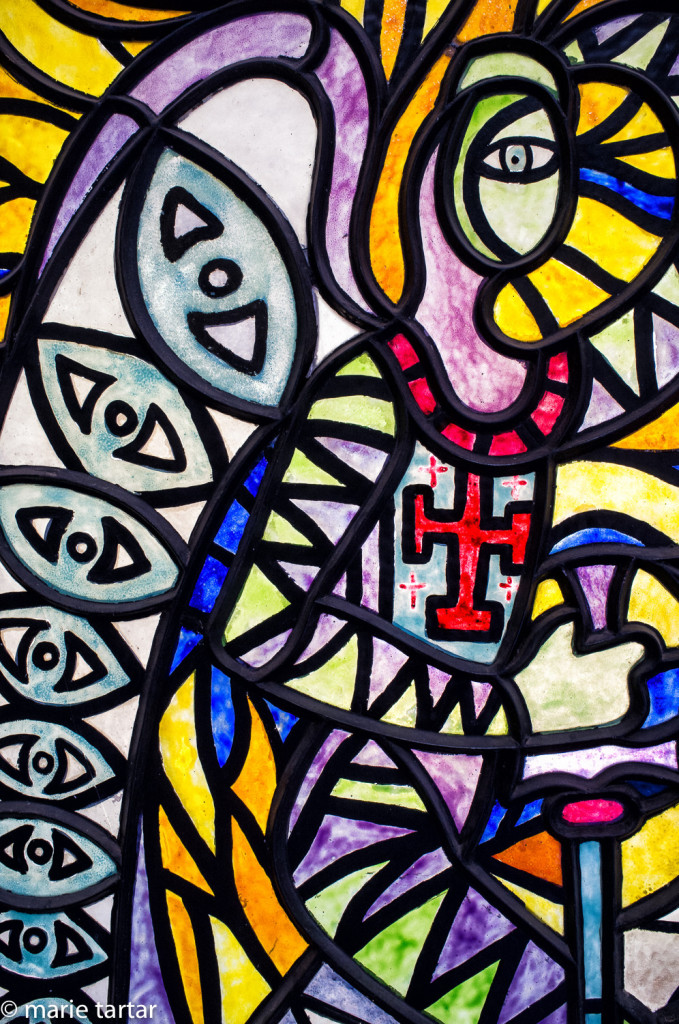 The stain-glass doors are spectacular.
The stain-glass doors are spectacular.
The final link in the Riviera chain of the trail of Jean Cocteau came by accident. We heard about Villa Santo Sospir while visiting in 2012, and Clarissa, Steve and I hiked the coastal path circling the peninsula that is Saint-Jean-Cap-Ferrat, passing below this seaside villa. Staying in the same area in 2013, I stumbled on an internet reference suggesting it was possible to visit the house with advance reservations. I fired off an email and happily, received a quick affirmative response .
My email to my sister at the time conveys my excitement at this discovery: “Remember that beautiful coastal walk we did at Saint-Jean-Cap-Ferrat? We passed under a house called Santo Sospir which had been decorated by Jean Cocteau. I learned quite by accident that one can visit it, by appointment. So, we got in today. The tour was given by Francine’s old age nurse, Eric, hired by her family to wean her from opium! Amazing view, very eccentric decoration, and Jean Cocteau’s drawings on the walls, lampshades, on virtually every surface. It was the home of a rich woman, Francine Weisweiller. Apparently, he lived there for years en famille with her and his boyfriend/her lover. Reportedly, they were the original “menage à trois.” Apparently, the Cartier rolling ring (like I have, with the intertwined white, gold and rose gold bands) was Cocteau’s design to signify their relationship. Funny to learn this after so many years.”
Cocteau’s description of the house as “tatooed” is quite apt. In addition to drawings on walls, ceilings and furniture, there are mosaics in the entryway and a tapestry of Judith et Holopherne in the dining room.
Tacked to a wall in Francine’s bedroom was a pencil portrait torn from a notebook by another famous visitor, Picasso!
That was quite a full day, as we also went to Villa Ephrussi-Rothchild and a fabulous Greek villa, Villa Kerylos, a pretty 1/2 hour beach walk away. We had visited the Villa Ephrussi-Rothchild with Clarissa, and returned the following year with Sarah and Aaron. In the intervening year, I had learned something about the distinguished banking family, the Ephrussi, from a book our entire bookclub loved, The Hare with the Amber Eyes, by a descendent of this family, the celebrated ceramic artist, Edmund de Waal. The house was fashioned after and named for an ocean liner, the Île de France, that its owner, Baroness Béatrice de Rothschild (1864–1934) had sailed on.
She was a Rothschild, married to the banker Maurice de Ephrussi. Constructed between 1905 and 1912 on the narrowest isthmus of the peninsula, the organizing principle casts the loggia of the second floor of the house as the deck of a mighty ship, from which are seen sumptuous views of the extensive gardens and the sea on either side.
The property as an ocean liner theme was carried so far, that the 30 gardeners in her employ wore sailor costumes, complete with red-pompom topped berets.
The rose colored villa is filled with gorgeous antiquities, but the 9 different themed gardens are even more astounding, collectively designated a Notable Garden of France.
Clarissa vetoed proceeding onto the Greek villa, Villa Kerylos, the first year, but Sarah and Aaron were game the next, despite the threat of sensory overload from the tapestries, porcelains, old master paintings and delightful excesses of Villa Ephrussi-Rothschild. It was but a 30 minute pretty coastal walk there, and well worth the effort. It was, in a word, amazing, the prettiest Greek style house I have ever seen, including in Greece, with fabulous mosaic floors and bathrooms, with marvelous octopi and sea creatures.
We’ve just about exhausted the trail of Jean Cocteau in the South of France…it will have to wait until we return to London and Paris to pick up the trail again, namely Eglise Notre-Dame de France in London near Leicester Square, Merz (Église Saint-Maximin), and Cocteau’s final home, Milly-la-Forêt.
Enough for one post…the next Côte d’Azur post will be on the trail of Le Courbusier, with an abbey or two along the way…
-Marie
Chapelle Cocteau

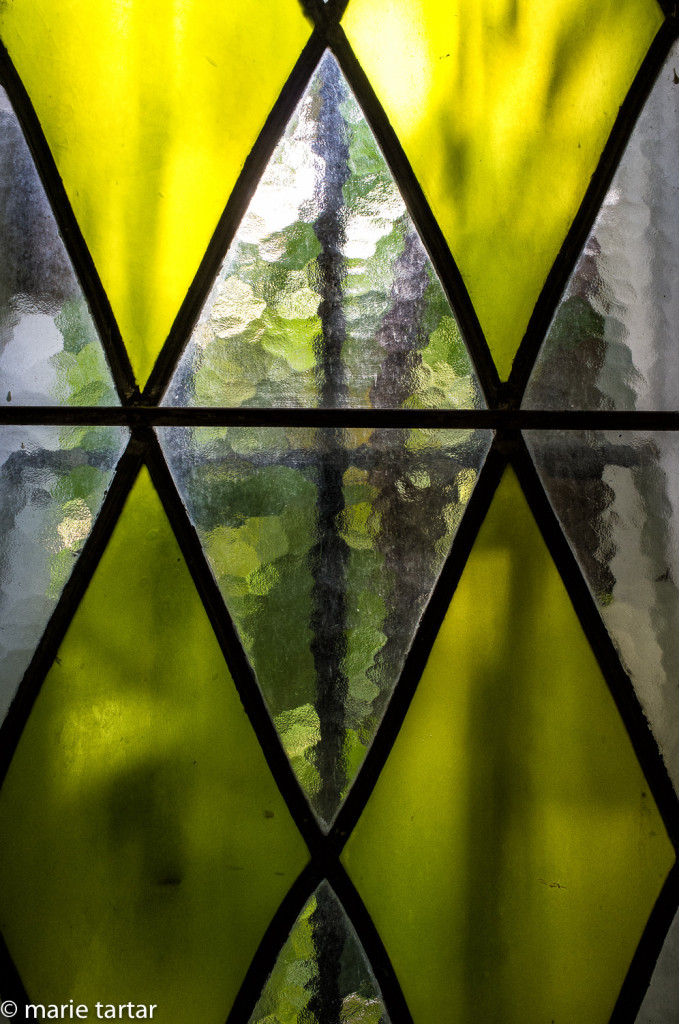
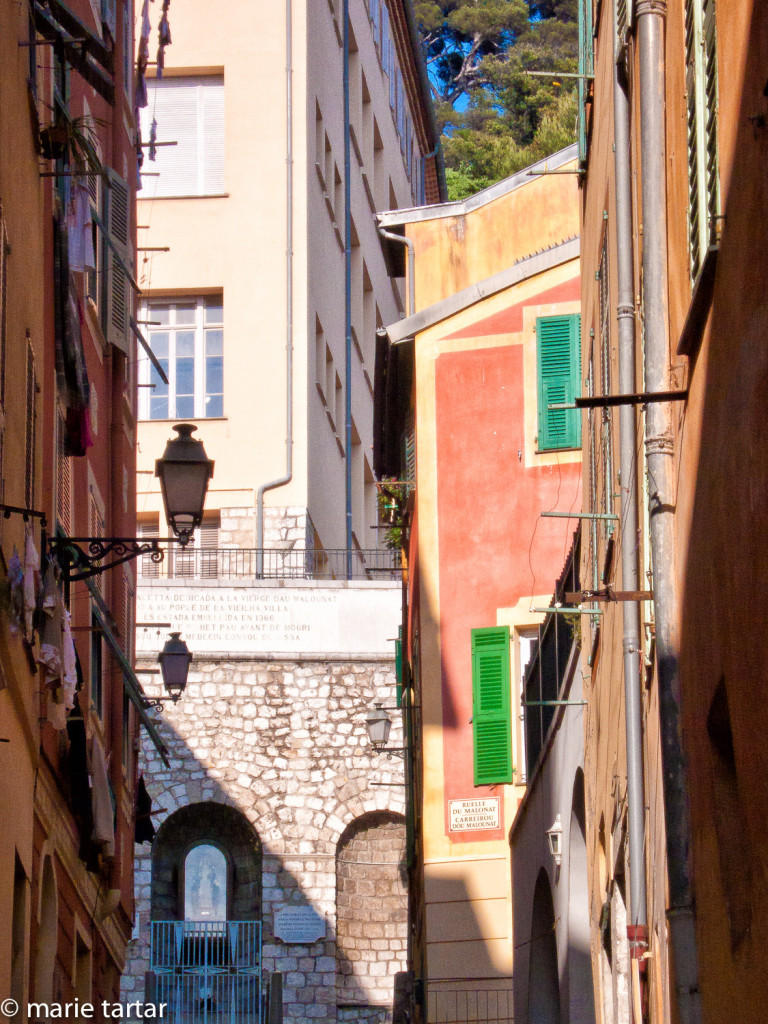
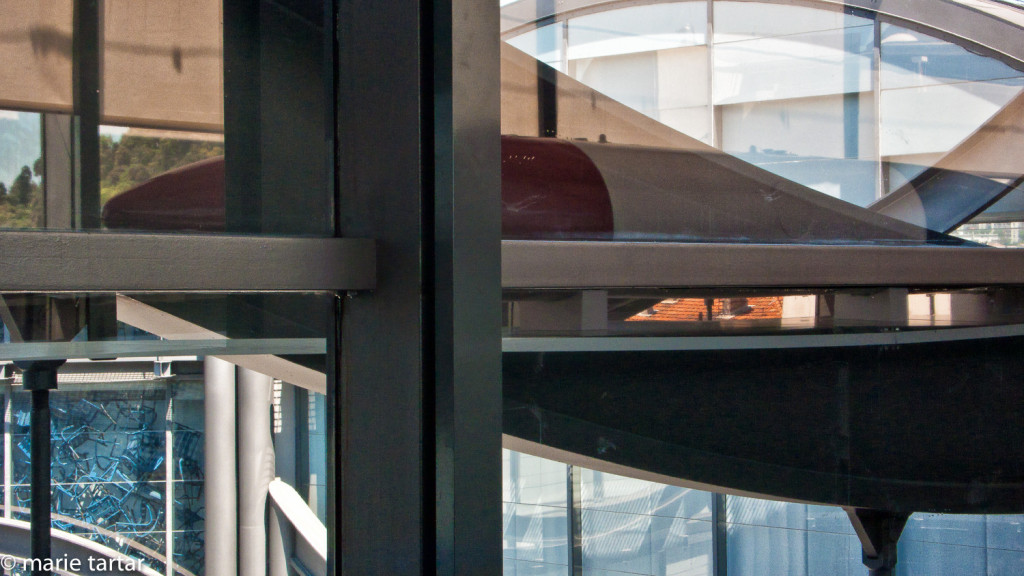

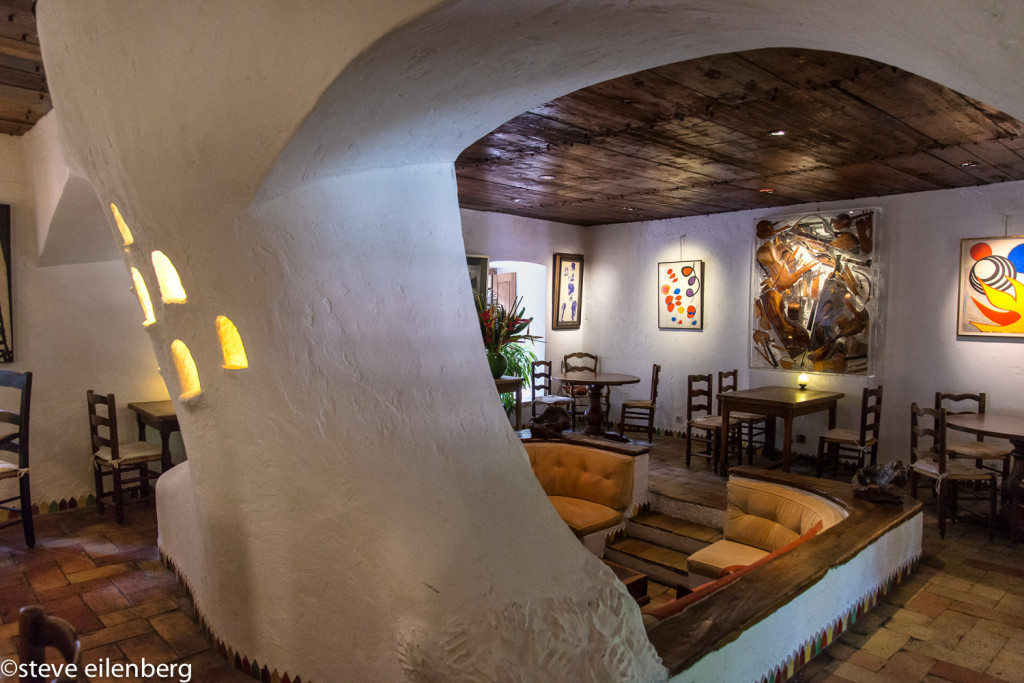
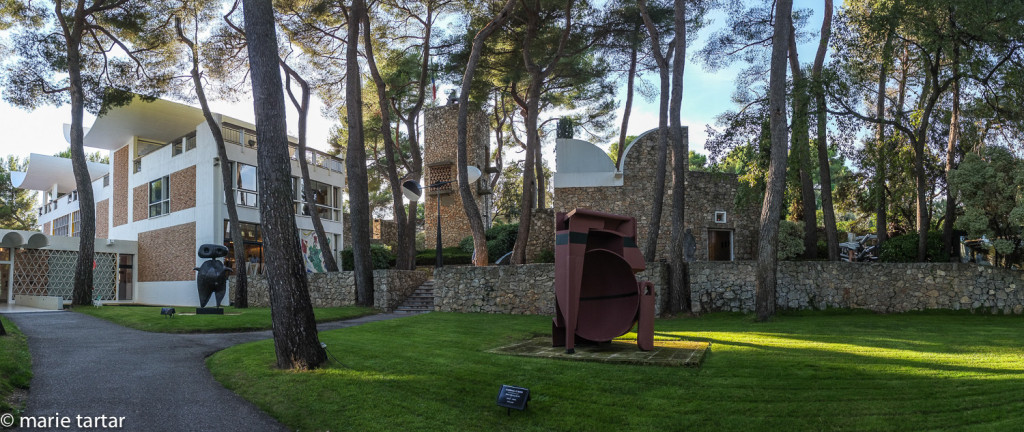
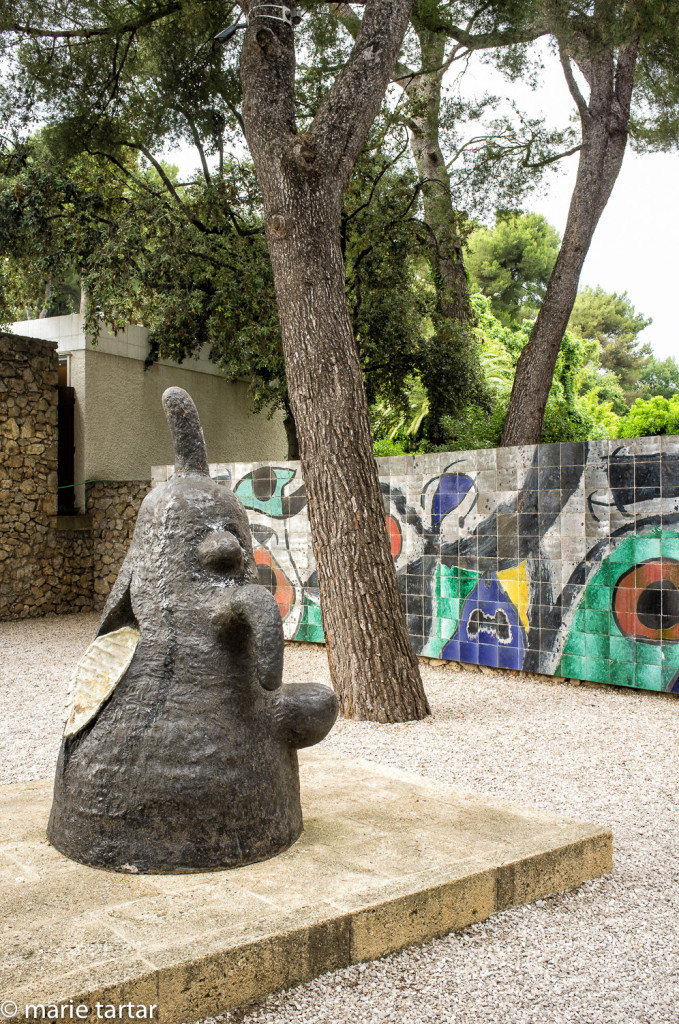
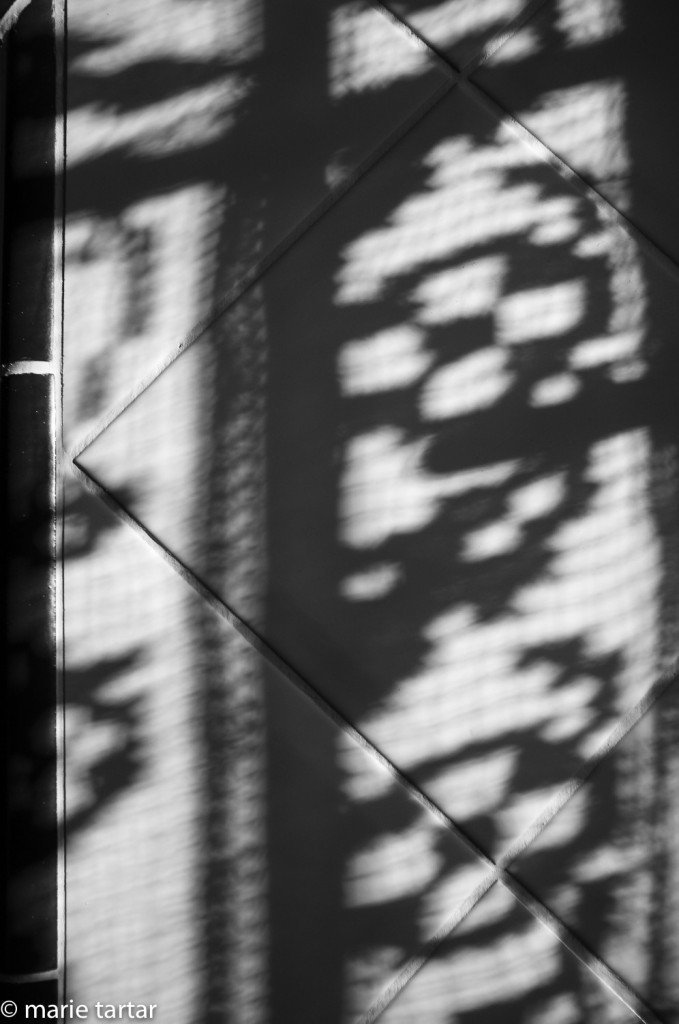

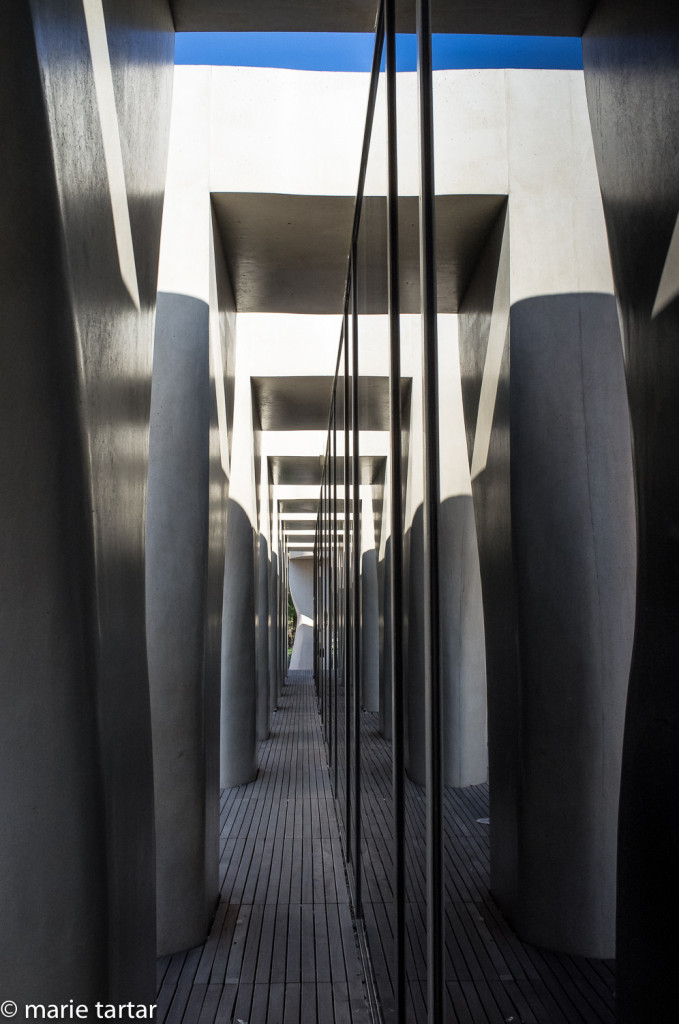
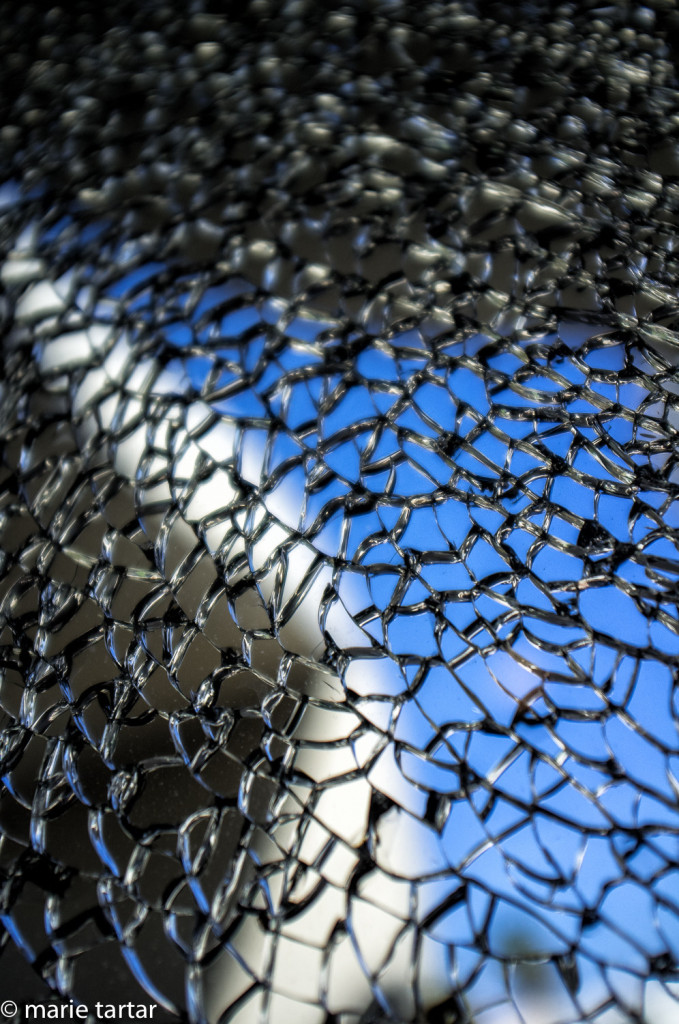
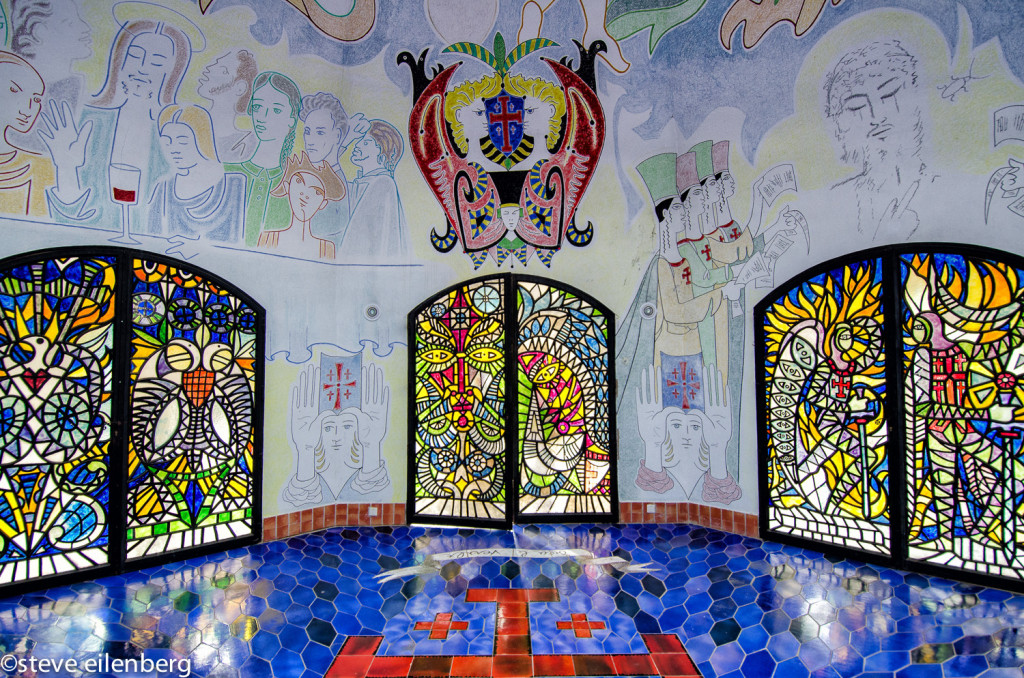
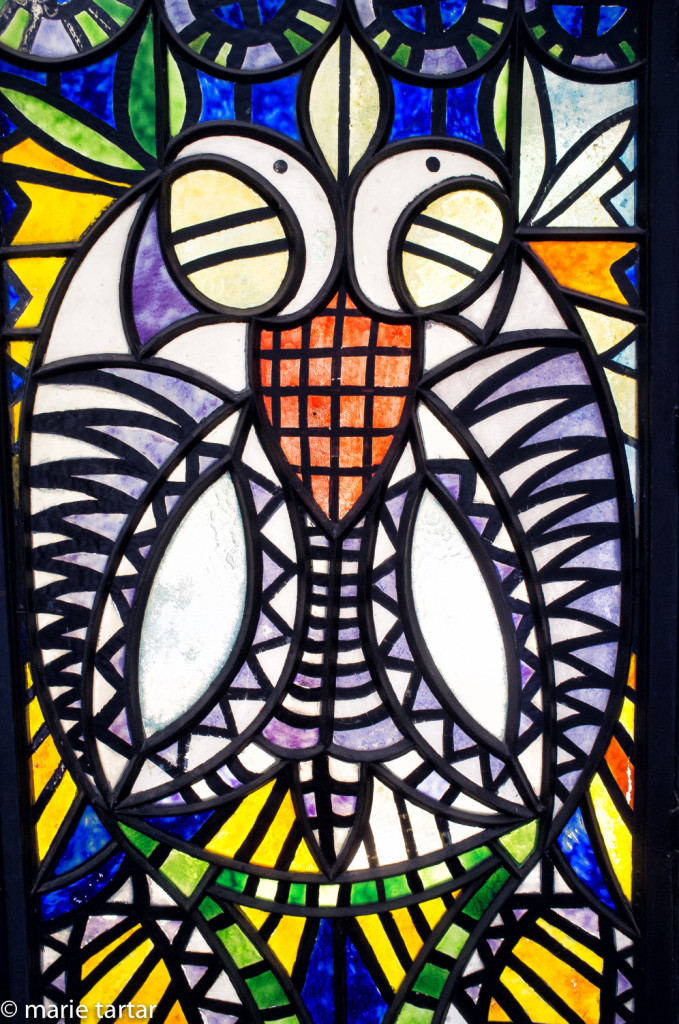
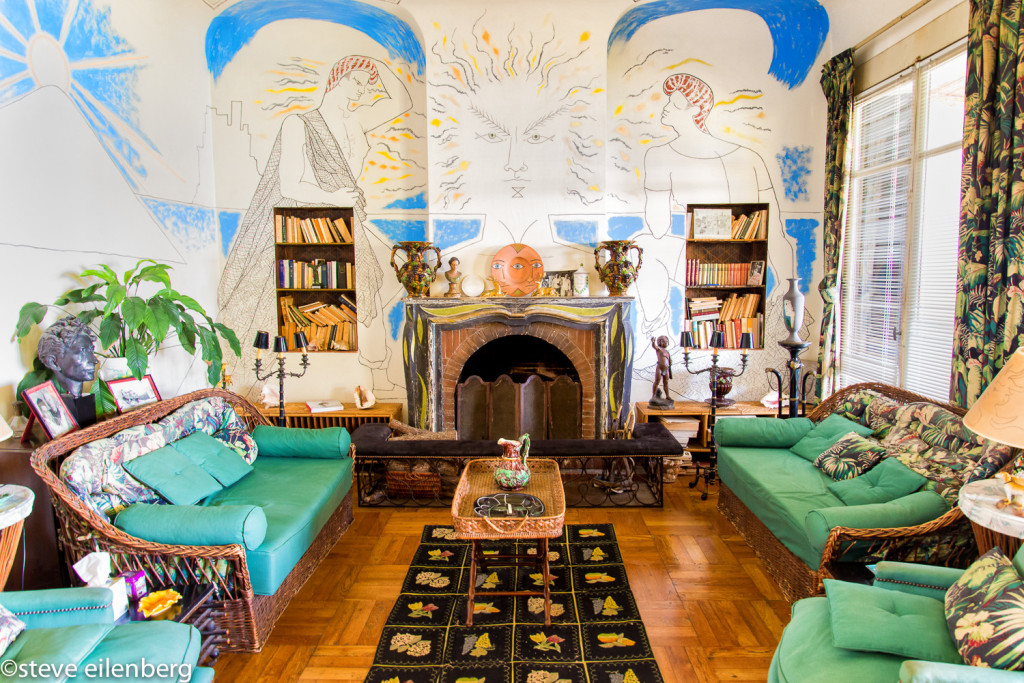
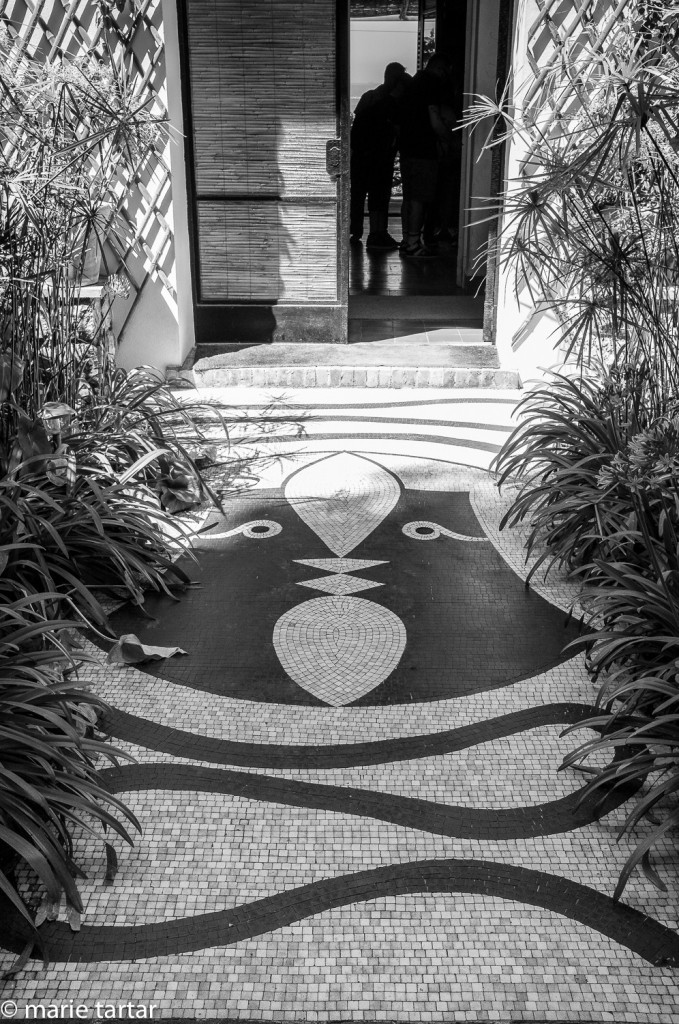
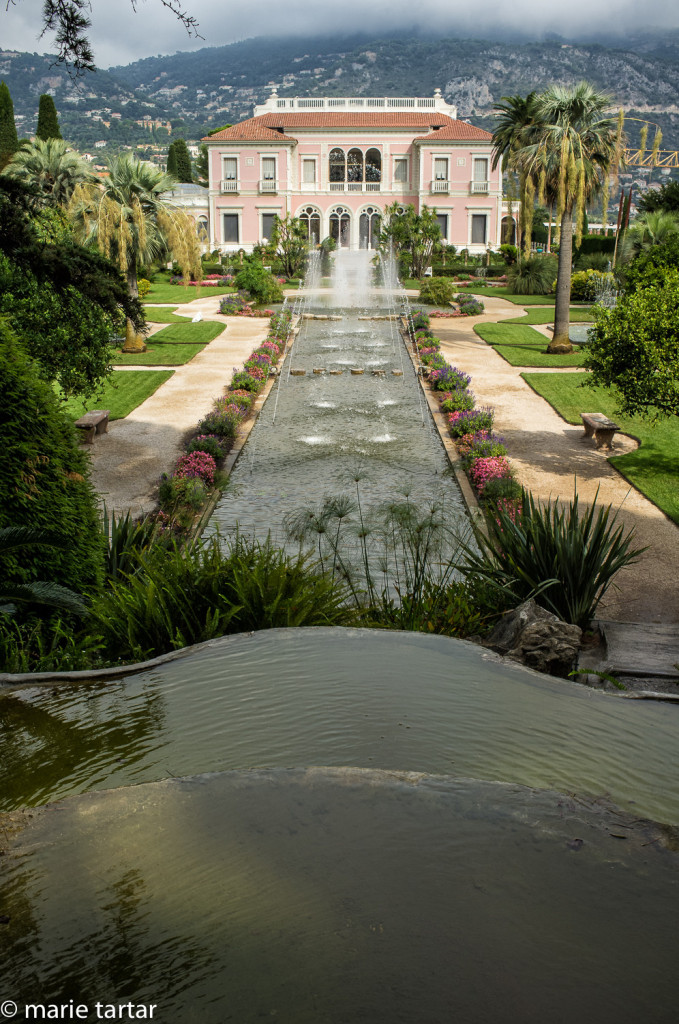

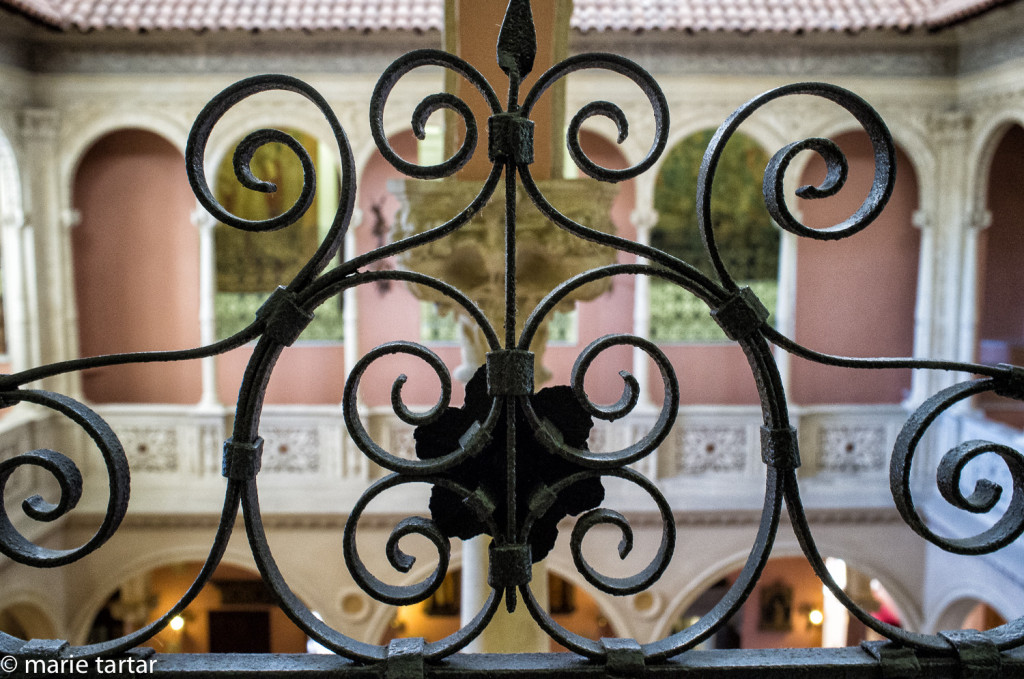


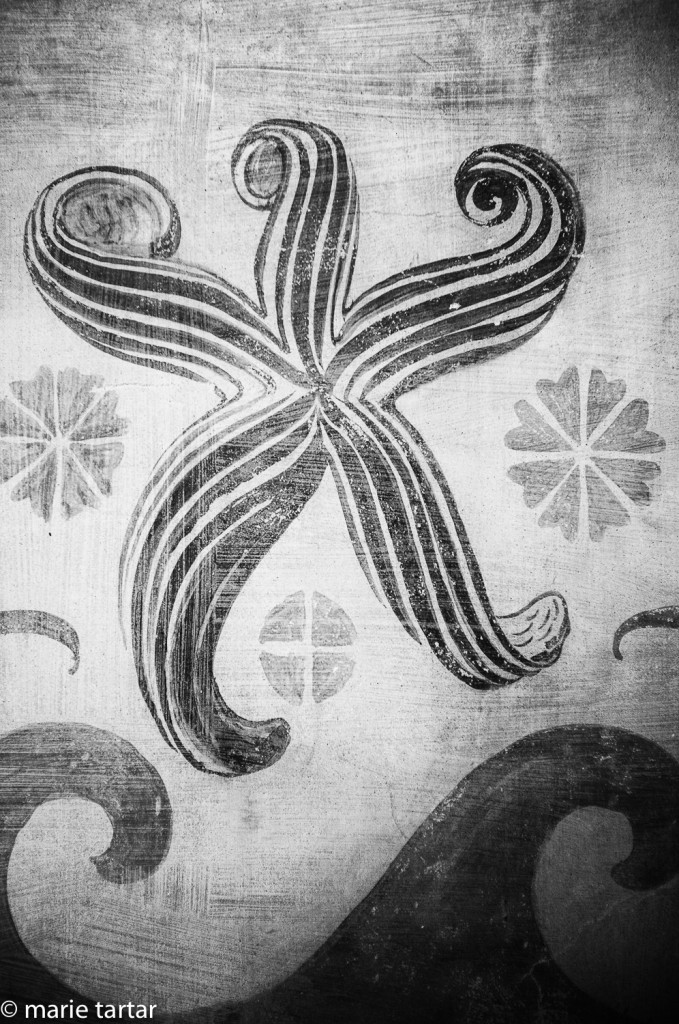
Magnficent journey. I wish I had your ‘eye’ for photographic art.